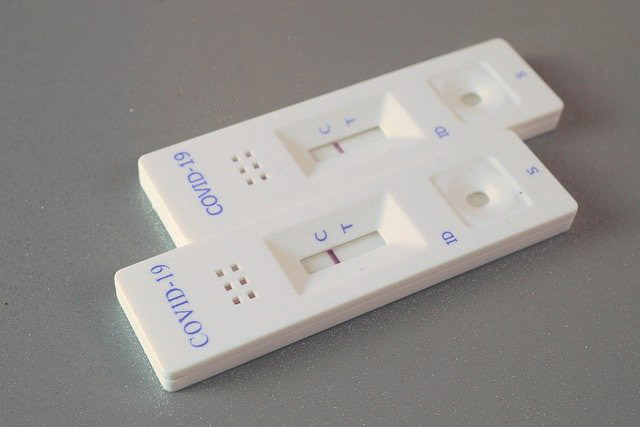Medical
Masks
Unlike a PCR test, which tests directly for the RNA, the genetic information of SARS-CoV-2, a rapid antigen test simply detects the proteins that coat the RNA of the virus.
A Corona Antigen Rapid Test can be used to test for infection with SARS-CoV-2.

Rapid tests work according to an immunochromatographic test principle (lateral-flow test), which means that there are SARS-CoV-2 antibodies bound with coloured particles (colloidal gold) in a test strip. Due to capillary forces, the sample passes through the test strip and any antigen proteins present are bound by the antibodies. As it continues to pass through, the antigen-antibody complex reaches the actual test field (marked with "t") with further immobilised antibodies. The accumulation in the test field results in a colouration (red line). The liquid moves on to a control field (marked with "c"), whose colouring indicates that the test has been carried out correctly. If no colouring appears in the control field, the test is invalid because probably too little sample material was applied to the test.
In March 2021, the first rapid tests became available that are approved as so-called lay tests for private use, as these rapid tests have to fulfil special requirements with regard to the use by medical laypersons.
Due to the high availability of the antigen tests, they are seen as a "complementary instrument in pandemic control" as published in the Epidemiological Bulletin of the Robert Koch Institute.
In contrast to rapid antigen tests, antibody tests do not detect the virus itself, but the antibodies that are produced as a reaction of the immune system to SARS-CoV-2. The immune system starts working when the virus enters the body and forms antibodies after a few days. These are part of the immune response and are easily detectable in the blood. Because of the time delay and the presence of the antibodies beyond the infection, an antibody test is not suitable for detecting an acute infection.